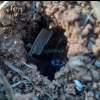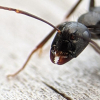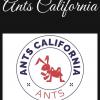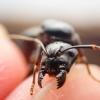- Formiculture.com
- Forums
- Gallery
- Members
- Member Map
- Chat

CCJ's ants - Opisthopsis (strobe ant), Melophorus, Pheidole antipodum, Polyrhachis, Myrmecia
Started By
CoolColJ
, Feb 26 2018 9:44 PM
journal opisthopsis rufithorax strobe ant camponotus melophorus furnace ant pheidole iridomyrmex suffusus polyrhachis rufifemur meat ant antipodum rhytidoponera aphaenogaster nigrocincta aspera myrmecia bull ant fulvipes
1787 replies to this topic
#1301
 Offline
-
Posted February 17 2019 - 11:48 AM
Offline
-
Posted February 17 2019 - 11:48 AM
I like the large Pheidole species you have. Here in Los Angeles CA. Our Pheidole are small. I wish Pheidole Rhea would migrate west to California's Deserts. A few hundred miles and we could keep them here.
#1302
 Offline
-
Posted February 17 2019 - 5:33 PM
Offline
-
Posted February 17 2019 - 5:33 PM
I like the large Pheidole species you have. Here in Los Angeles CA. Our Pheidole are small. I wish Pheidole Rhea would migrate west to California's Deserts. A few hundred miles and we could keep them here.
Taken me a while, and a lot of good luck to get these large Pheidole species queens.
Thankfully we don't interstate restrictions on ants for most states
Antipodum are only Pheidole in name though, they looks so different from other Pheidole, and have a caste structure more like Carebara, but also look different from them
Pheidole Rhea are cool, 14mm or so queens, but only have 3 castes





Edited by CoolColJ, February 17 2019 - 5:48 PM.
Current ant colonies -
1) Opisthopsis Rufithorax (strobe ant), Melophorus sp2. black and orange, Pheidole species, Pheidole antipodum
Journal = http://www.formicult...ra-iridomyrmex/
Heterotermes cf brevicatena termite pet/feeder journal = http://www.formicult...feeder-journal/
#1303
 Offline
-
Posted February 18 2019 - 3:24 AM
Offline
-
Posted February 18 2019 - 3:24 AM
Summer 18th February 2019
Camponotus suffusus bendigensis 17-18mm queen 1
20mm Test tube - in styrofoam and heat cable incubator
6 workers - 5 cocoons, 3 large, 6 eggs/small larvae
A worker eclosed, a second gen worker for sure.
The cotton is completely black and moldy, I will have to move them to a new test tube soon.
Getting closer to paving the way to sell Queen 2 with her soon to be 14 workers, maybe 15 by next week.
The logical choice would be to sell this one and keep queen 2 with her greater worker count....
But this queen has that brighter red throax ![]()
Edited by CoolColJ, February 18 2019 - 4:53 AM.
Current ant colonies -
1) Opisthopsis Rufithorax (strobe ant), Melophorus sp2. black and orange, Pheidole species, Pheidole antipodum
Journal = http://www.formicult...ra-iridomyrmex/
Heterotermes cf brevicatena termite pet/feeder journal = http://www.formicult...feeder-journal/
#1304
 Offline
-
Posted February 19 2019 - 4:45 AM
Offline
-
Posted February 19 2019 - 4:45 AM
Summer 19th February 2019
Wooo busy night tonight!
Camponotus suffusus bendigensis 17-18mm queen 1
20mm Test tube - in styrofoam and heat cable incubator
5 nanitics, 5 cocoons, 3 large, 1 medium, 5+ eggs/small larvae
Hmm I thought they had 5 cocoons a few days ago, but only see 2 now...I guess they died and ate 3 of them
One cocoon looks dark and is ready to eclose soon.
I then took 3 cocoons from queen 2 and donated to them
I moved them to a new test tube took about 30mins with heat cable and bright LED light.
All the workers and brood had moved across leaving the queen, but she moved after I tapped on the test tube
Anyway now that I can see her clearly she looks quite different from Queen 2 I got from Scott Gram .
Not only is her thorax a much brighter red and different pattern, but she has yellow bands on her gaster, while queen 2 has black bands, like a regular suffusus.
As far as difference between the workers, I can't see too much a difference. Maybe queen 1 has brighter red legged workers, while queen 2 had dark red legged workers.
Also took them out of the incubator and are not outside on the heat cable
Queen is so bloated now that she has to be over 2cm
click


Camponotus suffusus bendigensis 17mm queen 2
20mm Test tube - heat cable
13 workers - 6 cocoons, 3 large, 4 medium, 10+ small larvae/egg
Robbed of 3 cocoons

Pheidole antipodum 14-15mm queens x 7
All setups 20mm test tube and a styro foam double chamber entrance
in styrofoam and heat cable incubator
4) Queen with red dirt
10+ nanitics, small clump of 15+ eggs, 5+ donated brood from queen 5
7) Queen - bare test tube, former partner of setup 2
4 nanitics - medium clump of brood, some donated brood from queen 5 and 6
Heat cable
1) Dual queen - red dirt - cleared all the red dirt and heaped up at the middle of the test tube
15+ nanitics - huge stack of brood
2) Dual queen
4 nanitics - medium stack of eggs, some donated brood from queen 5 and setup 1
5) Queen - bare test tube
30+ nanitics - big stack of brood
Decided to move the dual queen setup 2 out of the cardboard test tube with mite looking things.
Lucky most of these mite looking critters stayed underneath the cardboard.
First I stole some brood from Setup 1 and tapped them into the new test tube.
Then pulled the carboard out of their setup, with the queens and brood all ontop, and placed it into a petri dish.
They didn't panic, just stayed out. Grabbed the queens and brood with my long featherweight forceps and dropped them into the new one.
I had round up the 4 workers and get them inside, which took a bit more effort.
Phew finally got it done. The workers eventually rounded up all the scattered brood.
Then I placed the styrofoam chamber entrance back in, after sterilizing it in hot water.
After a careful look with my jeweller's loupe I see no mites!
Dual queen setup 2 - the two largest and prettiest queens.
Both measure around 15mm.
The bigger gaster one is likely the dominant queen. Their brood still haven't gotten going yet.


I saw the two queens feeding each other later on while a minor worker also try to stick her head in for a feed
I took a photo of them during this, but just missed the best angle... oh well....will post it up tommorrow
Wooo busy night tonight!
Camponotus suffusus bendigensis 17-18mm queen 1
20mm Test tube - in styrofoam and heat cable incubator
5 nanitics, 5 cocoons, 3 large, 1 medium, 5+ eggs/small larvae
Hmm I thought they had 5 cocoons a few days ago, but only see 2 now...I guess they died and ate 3 of them
One cocoon looks dark and is ready to eclose soon.
I then took 3 cocoons from queen 2 and donated to them
I moved them to a new test tube took about 30mins with heat cable and bright LED light.
All the workers and brood had moved across leaving the queen, but she moved after I tapped on the test tube
Anyway now that I can see her clearly she looks quite different from Queen 2 I got from Scott Gram .
Not only is her thorax a much brighter red and different pattern, but she has yellow bands on her gaster, while queen 2 has black bands, like a regular suffusus.
As far as difference between the workers, I can't see too much a difference. Maybe queen 1 has brighter red legged workers, while queen 2 had dark red legged workers.
Also took them out of the incubator and are not outside on the heat cable
Queen is so bloated now that she has to be over 2cm
click


Camponotus suffusus bendigensis 17mm queen 2
20mm Test tube - heat cable
13 workers - 6 cocoons, 3 large, 4 medium, 10+ small larvae/egg
Robbed of 3 cocoons

Pheidole antipodum 14-15mm queens x 7
All setups 20mm test tube and a styro foam double chamber entrance
in styrofoam and heat cable incubator
4) Queen with red dirt
10+ nanitics, small clump of 15+ eggs, 5+ donated brood from queen 5
7) Queen - bare test tube, former partner of setup 2
4 nanitics - medium clump of brood, some donated brood from queen 5 and 6
Heat cable
1) Dual queen - red dirt - cleared all the red dirt and heaped up at the middle of the test tube
15+ nanitics - huge stack of brood
2) Dual queen
4 nanitics - medium stack of eggs, some donated brood from queen 5 and setup 1
5) Queen - bare test tube
30+ nanitics - big stack of brood
Decided to move the dual queen setup 2 out of the cardboard test tube with mite looking things.
Lucky most of these mite looking critters stayed underneath the cardboard.
First I stole some brood from Setup 1 and tapped them into the new test tube.
Then pulled the carboard out of their setup, with the queens and brood all ontop, and placed it into a petri dish.
They didn't panic, just stayed out. Grabbed the queens and brood with my long featherweight forceps and dropped them into the new one.
I had round up the 4 workers and get them inside, which took a bit more effort.
Phew finally got it done. The workers eventually rounded up all the scattered brood.
Then I placed the styrofoam chamber entrance back in, after sterilizing it in hot water.
After a careful look with my jeweller's loupe I see no mites!
Dual queen setup 2 - the two largest and prettiest queens.
Both measure around 15mm.
The bigger gaster one is likely the dominant queen. Their brood still haven't gotten going yet.


I saw the two queens feeding each other later on while a minor worker also try to stick her head in for a feed
I took a photo of them during this, but just missed the best angle... oh well....will post it up tommorrow
Current ant colonies -
1) Opisthopsis Rufithorax (strobe ant), Melophorus sp2. black and orange, Pheidole species, Pheidole antipodum
Journal = http://www.formicult...ra-iridomyrmex/
Heterotermes cf brevicatena termite pet/feeder journal = http://www.formicult...feeder-journal/
#1305
 Offline
-
Posted February 19 2019 - 11:05 AM
Offline
-
Posted February 19 2019 - 11:05 AM
#1306
 Offline
-
Posted February 19 2019 - 4:29 PM
Offline
-
Posted February 19 2019 - 4:29 PM
Pic of mrymecia?
nothing has changed since my last batch of pics and a video
This post and the one below it
http://www.formicult...-63#entry108134
Edited by CoolColJ, February 19 2019 - 4:30 PM.
Current ant colonies -
1) Opisthopsis Rufithorax (strobe ant), Melophorus sp2. black and orange, Pheidole species, Pheidole antipodum
Journal = http://www.formicult...ra-iridomyrmex/
Heterotermes cf brevicatena termite pet/feeder journal = http://www.formicult...feeder-journal/
#1307
 Offline
-
Posted February 19 2019 - 6:21 PM
Offline
-
Posted February 19 2019 - 6:21 PM
Summer 20th February 2019
Camponotus suffusus bendigensis 17-18mm (2+cm bloated) queen 1
20mm Test tube - in styrofoam and heat cable incubator
7 workers, 4 cocoons, 3 large, 1 medium, 5+ eggs/small larvae
A worker eclosed last night
Queen is looking massive!
Camponotus suffusus bendigensis 17mm (2cm bloated) queen 2
20mm Test tube - heat cable
14 workers - 5 cocoons, 3 large, 4 medium, 10+ small larvae/egg
A worker eclosed last night
Looking ready to be sold next week.
Camponotus suffusus bendigensis 17-18mm (2+cm bloated) queen 1
20mm Test tube - in styrofoam and heat cable incubator
7 workers, 4 cocoons, 3 large, 1 medium, 5+ eggs/small larvae
A worker eclosed last night
Queen is looking massive!
Camponotus suffusus bendigensis 17mm (2cm bloated) queen 2
20mm Test tube - heat cable
14 workers - 5 cocoons, 3 large, 4 medium, 10+ small larvae/egg
A worker eclosed last night
Looking ready to be sold next week.
Edited by CoolColJ, February 19 2019 - 6:22 PM.
Current ant colonies -
1) Opisthopsis Rufithorax (strobe ant), Melophorus sp2. black and orange, Pheidole species, Pheidole antipodum
Journal = http://www.formicult...ra-iridomyrmex/
Heterotermes cf brevicatena termite pet/feeder journal = http://www.formicult...feeder-journal/
#1308
 Offline
-
Posted February 20 2019 - 1:10 AM
Offline
-
Posted February 20 2019 - 1:10 AM
Camponotus suffusus bendigensis 17-18mm (2+cm bloated) queen 1
20mm Test tube - in styrofoam and heat cable incubator
7 workers, 3 cocoons, 3 large, 1 medium, 5+ eggs/small larvae
Ahhh crap, they ate one of the cocoons... most likely one of the 3 donated ones from last night
Colobopsis macrocephala 9mm queen
16mm test tube - in styrofoam and heat cable incubator
1 nanitic - 1 pupa and 1 large larvae, 4 eggs
First nanitic is up!
And the second one should be soon.
OK this one is pretty light, no wonder the pupa does not darken before eclosing, so it makes it hard to tell when they are getting close to eclosing
Only the dark eyes give it away
click




20mm Test tube - in styrofoam and heat cable incubator
7 workers, 3 cocoons, 3 large, 1 medium, 5+ eggs/small larvae
Ahhh crap, they ate one of the cocoons... most likely one of the 3 donated ones from last night
Colobopsis macrocephala 9mm queen
16mm test tube - in styrofoam and heat cable incubator
1 nanitic - 1 pupa and 1 large larvae, 4 eggs
First nanitic is up!
And the second one should be soon.
OK this one is pretty light, no wonder the pupa does not darken before eclosing, so it makes it hard to tell when they are getting close to eclosing
Only the dark eyes give it away
click




Current ant colonies -
1) Opisthopsis Rufithorax (strobe ant), Melophorus sp2. black and orange, Pheidole species, Pheidole antipodum
Journal = http://www.formicult...ra-iridomyrmex/
Heterotermes cf brevicatena termite pet/feeder journal = http://www.formicult...feeder-journal/
#1309
 Offline
-
Posted February 20 2019 - 11:02 AM
Offline
-
Posted February 20 2019 - 11:02 AM
He looks so cute. 
Edited by Rstheant, February 20 2019 - 11:04 AM.
#1310
 Offline
-
Posted February 20 2019 - 1:59 PM
Offline
-
Posted February 20 2019 - 1:59 PM
You can see through her!
Website: https://sites.google...home?authuser=0
Instagram: https://www.instagra.../bay.area.ants/
Youtube Channel: https://www.youtube....5Mh2eBAviuO2uw?
#1311
 Offline
-
Posted February 20 2019 - 4:40 PM
Offline
-
Posted February 20 2019 - 4:40 PM
Pheidole Rhea are cool, 14mm or so queens, but only have 3 castes
You are aware Pheidole rhea are one of 7 species of Pheidole spp. on the planet to have been officially identified as having 3 castes, right? So far, no Pheidole sp. outside of the Southwestern US or Northern Mexican region has been officially labelled as having more than 2 worker castes. I'm not sure where other genera stand. The term "Supermajor" has been dirtied, in my opinion mostly thanks to Antscanada, but it actually has a specific meaning. It doesn't simply mean "The biggest majors in my ant colony." If every size variaton of a worker ant is another caste, then wild colonies would have thousands of castes.
Currently Keeping:
Trachymyrmex septentrionalis
Pheidole pilifera
Forelius sp. (Monogynous, bicolored) "Midwestern Forelius"
Crematogaster cerasi
Pheidole bicarinata
Aphaenogaster rudis
Camponotus chromaiodes
Formica sp. (microgena species)
Nylanderia cf. arenivega
#1312
 Offline
-
Posted February 20 2019 - 6:23 PM
Offline
-
Posted February 20 2019 - 6:23 PM
#1313
 Offline
-
Posted February 20 2019 - 7:53 PM
Offline
-
Posted February 20 2019 - 7:53 PM
You are aware Pheidole rhea are one of 7 species of Pheidole spp. on the planet to have been officially identified as having 3 castes, right? So far, no Pheidole sp. outside of the Southwestern US or Northern Mexican region has been officially labelled as having more than 2 worker castes. I'm not sure where other genera stand. The term "Supermajor" has been dirtied, in my opinion mostly thanks to Antscanada, but it actually has a specific meaning. It doesn't simply mean "The biggest majors in my ant colony." If every size variaton of a worker ant is another caste, then wild colonies would have thousands of castes.Pheidole Rhea are cool, 14mm or so queens, but only have 3 castes
Pretty sure my Pheidole antipodum already have 3 castes already, and will eventually have over 6 castes of workers and majors
old crappy pic, but I will get better ones later on

@ [member CoolColJ] how come Jordan from AA colony of myrmecia grow faster that yours even though he has had them longer? His 18 month colony of some mrymecia had about 4-5 larvae when it had 1 worker. Okay, I’m crazy. I don’t know what exactly I’m saying, so please clarify for me, the nuthead who doesn’t know what he’s saying.
Different species and different queens all have varying growth rates and how willing they are to lay eggs.
And even if they lay and develop quickly, the pupa may not spin a cocoon properly and likely die. A very common issue with first time Myrmecia queens.
One of my previous M.nigrocincta a few months back laid 8-10 eggs within a week of capture, large larvae very quickly, but the failed to cocoon and all died...
The first worker is crucial, so I'm glad my fulvipes already has one
Edited by CoolColJ, February 21 2019 - 6:41 PM.
- dermy and YsTheAnt like this
Current ant colonies -
1) Opisthopsis Rufithorax (strobe ant), Melophorus sp2. black and orange, Pheidole species, Pheidole antipodum
Journal = http://www.formicult...ra-iridomyrmex/
Heterotermes cf brevicatena termite pet/feeder journal = http://www.formicult...feeder-journal/
#1314
 Offline
-
Posted February 20 2019 - 9:43 PM
Offline
-
Posted February 20 2019 - 9:43 PM
Summer 21st February 2019
Camponotus suffusus bendigensis 17-18mm (2+cm bloated) queen 1
20mm Test tube - in styrofoam and heat cable incubator
7 workers, 3 cocoons, 3 large, 1 medium, 4 eggs/small larvae
Hmm they have 1 less egg than I thought
group pic - fresh test tube
click

Camponotus suffusus bendigensis 17mm (2cm bloated) queen 2
20mm Test tube - heat cable
14 workers - 7 cocoons, 4 large, 10+ medium/small larvae/eggs
2 more new cocoons spun.
Lots of brood.
final pic most likely, before they get sold.



Camponotus suffusus bendigensis 17-18mm (2+cm bloated) queen 1
20mm Test tube - in styrofoam and heat cable incubator
7 workers, 3 cocoons, 3 large, 1 medium, 4 eggs/small larvae
Hmm they have 1 less egg than I thought
group pic - fresh test tube
click

Camponotus suffusus bendigensis 17mm (2cm bloated) queen 2
20mm Test tube - heat cable
14 workers - 7 cocoons, 4 large, 10+ medium/small larvae/eggs
2 more new cocoons spun.
Lots of brood.
final pic most likely, before they get sold.



Edited by CoolColJ, February 21 2019 - 12:09 AM.
Current ant colonies -
1) Opisthopsis Rufithorax (strobe ant), Melophorus sp2. black and orange, Pheidole species, Pheidole antipodum
Journal = http://www.formicult...ra-iridomyrmex/
Heterotermes cf brevicatena termite pet/feeder journal = http://www.formicult...feeder-journal/
#1315
 Offline
-
Posted February 20 2019 - 10:19 PM
Offline
-
Posted February 20 2019 - 10:19 PM
Pheidole antipodum 14-15mm queens x 7
All setups 20mm test tube and a styro foam double chamber entrance
in styrofoam and heat cable incubator
4) Queen with red dirt
10+ nanitics, small clump of 15+ eggs, 5+ donated brood from queen 5
7) Queen - bare test tube, former partner of setup 2
4 nanitics - medium clump of brood, some donated brood from queen 5 and 6
Heat cable
1) Dual queen - red dirt - cleared all the red dirt and heaped up at the middle of the test tube
15+ nanitics - huge stack of brood
2) Dual queen
6 nanitics - medium stack of eggs, some donated brood from queen 5 and setup 1
5) Queen - bare test tube
30+ nanitics - big stack of brood
Setup 2 has two more nanitics eclose, a minor and a mini major.
check the size difference!
click to enlarge


queen 2 gets her head smothered


All setups 20mm test tube and a styro foam double chamber entrance
in styrofoam and heat cable incubator
4) Queen with red dirt
10+ nanitics, small clump of 15+ eggs, 5+ donated brood from queen 5
7) Queen - bare test tube, former partner of setup 2
4 nanitics - medium clump of brood, some donated brood from queen 5 and 6
Heat cable
1) Dual queen - red dirt - cleared all the red dirt and heaped up at the middle of the test tube
15+ nanitics - huge stack of brood
2) Dual queen
6 nanitics - medium stack of eggs, some donated brood from queen 5 and setup 1
5) Queen - bare test tube
30+ nanitics - big stack of brood
Setup 2 has two more nanitics eclose, a minor and a mini major.
check the size difference!
click to enlarge


queen 2 gets her head smothered


Current ant colonies -
1) Opisthopsis Rufithorax (strobe ant), Melophorus sp2. black and orange, Pheidole species, Pheidole antipodum
Journal = http://www.formicult...ra-iridomyrmex/
Heterotermes cf brevicatena termite pet/feeder journal = http://www.formicult...feeder-journal/
#1316
 Offline
-
Posted February 21 2019 - 5:13 AM
Offline
-
Posted February 21 2019 - 5:13 AM
You are aware Pheidole rhea are one of 7 species of Pheidole spp. on the planet to have been officially identified as having 3 castes, right? So far, no Pheidole sp. outside of the Southwestern US or Northern Mexican region has been officially labelled as having more than 2 worker castes. I'm not sure where other genera stand. The term "Supermajor" has been dirtied, in my opinion mostly thanks to Antscanada, but it actually has a specific meaning. It doesn't simply mean "The biggest majors in my ant colony." If every size variaton of a worker ant is another caste, then wild colonies would have thousands of castes.Pheidole Rhea are cool, 14mm or so queens, but only have 3 castes
Pretty sure my Pheidole antipodum already have 3 castes already, and will eventually have over 6 castes of workers and majors
Like I already mentioned, "If every size variaton of a worker ant is another caste, then wild colonies would have thousands of castes." I see no evidence to support the theory that Pheidole antipodum have more than 2 castes. All I see are different sized majors. ![]()
I found this paper to help illustrate my point. https://esajournals....10.2307/1930669
"Castes in social insects are commonly associated with physiological division of labor, and the behavior and morphological characteristics of the individual are also involved"
Furthermore, here is another paper I found on the subject https://link.springe...0040-011-0176-8
"[In the genus Pheidole] Just seven described species are soldier-polymorphic, with a broad soldier size range."
"Soldier-polymorphic" meaning they have more than one major caste.
Edited by Mdrogun, February 21 2019 - 5:32 AM.
Currently Keeping:
Trachymyrmex septentrionalis
Pheidole pilifera
Forelius sp. (Monogynous, bicolored) "Midwestern Forelius"
Crematogaster cerasi
Pheidole bicarinata
Aphaenogaster rudis
Camponotus chromaiodes
Formica sp. (microgena species)
Nylanderia cf. arenivega
#1317
 Offline
-
Posted February 21 2019 - 5:33 AM
Offline
-
Posted February 21 2019 - 5:33 AM
"Soldier-polymorphic" meaning they have more than one major caste.Like I already mentioned, "If every size variaton of a worker ant is another caste, then wild colonies would have thousands of castes." I see no evidence to support the theory that Pheidole antipodum have more than 2 castes. All I see are different sized majors.Pretty sure my Pheidole antipodum already have 3 castes already, and will eventually have over 6 castes of workers and majorsYou are aware Pheidole rhea are one of 7 species of Pheidole spp. on the planet to have been officially identified as having 3 castes, right? So far, no Pheidole sp. outside of the Southwestern US or Northern Mexican region has been officially labelled as having more than 2 worker castes. I'm not sure where other genera stand. The term "Supermajor" has been dirtied, in my opinion mostly thanks to Antscanada, but it actually has a specific meaning. It doesn't simply mean "The biggest majors in my ant colony." If every size variaton of a worker ant is another caste, then wild colonies would have thousands of castes.Pheidole Rhea are cool, 14mm or so queens, but only have 3 castes

I found this paper to help illustrate my point. https://esajournals....10.2307/1930669
"Castes in social insects are commonly associated with physiological division of labor, and the behavior and morphological characteristics of the individual are also involved"
Furthermore, here is a paper is another paper I found on the subject https://link.springe...0040-011-0176-8
"[In the genus Pheidole] Just seven described species are soldier-polymorphic, with a broad soldier size range."[/size]
have you see how different looking the super majors are to the smaller majors in antipodum?
Different structure, shape and colours.
There are also two sizes of minor workers with different shapes
Current ant colonies -
1) Opisthopsis Rufithorax (strobe ant), Melophorus sp2. black and orange, Pheidole species, Pheidole antipodum
Journal = http://www.formicult...ra-iridomyrmex/
Heterotermes cf brevicatena termite pet/feeder journal = http://www.formicult...feeder-journal/
#1318
 Offline
-
Posted February 21 2019 - 5:37 AM
Offline
-
Posted February 21 2019 - 5:37 AM
There are also a few Pheidole species in Asia that have three castes
Minor, medial and major


Minor, medial and major


Edited by CoolColJ, February 21 2019 - 5:39 AM.
Current ant colonies -
1) Opisthopsis Rufithorax (strobe ant), Melophorus sp2. black and orange, Pheidole species, Pheidole antipodum
Journal = http://www.formicult...ra-iridomyrmex/
Heterotermes cf brevicatena termite pet/feeder journal = http://www.formicult...feeder-journal/
#1319
 Offline
-
Posted February 21 2019 - 5:39 AM
Offline
-
Posted February 21 2019 - 5:39 AM
"Soldier-polymorphic" meaning they have more than one major caste.
Like I already mentioned, "If every size variaton of a worker ant is another caste, then wild colonies would have thousands of castes." I see no evidence to support the theory that Pheidole antipodum have more than 2 castes. All I see are different sized majors.
Pretty sure my Pheidole antipodum already have 3 castes already, and will eventually have over 6 castes of workers and majors
You are aware Pheidole rhea are one of 7 species of Pheidole spp. on the planet to have been officially identified as having 3 castes, right? So far, no Pheidole sp. outside of the Southwestern US or Northern Mexican region has been officially labelled as having more than 2 worker castes. I'm not sure where other genera stand. The term "Supermajor" has been dirtied, in my opinion mostly thanks to Antscanada, but it actually has a specific meaning. It doesn't simply mean "The biggest majors in my ant colony." If every size variaton of a worker ant is another caste, then wild colonies would have thousands of castes.Pheidole Rhea are cool, 14mm or so queens, but only have 3 castes


I found this paper to help illustrate my point. https://esajournals....10.2307/1930669
"Castes in social insects are commonly associated with physiological division of labor, and the behavior and morphological characteristics of the individual are also involved"
Furthermore, here is a paper is another paper I found on the subject https://link.springe...0040-011-0176-8
"[In the genus Pheidole] Just seven described species are soldier-polymorphic, with a broad soldier size range."[/size]
have you see how different looking the super majors are to the smaller majors in antipodum?
Different structure, shape and colours.
There are also two sizes of minor workers with different shapes
Their structure is not meaningfully different. It is not just morphological differences that determine a new caste. There also needs to be a different division of labor. In the ant Pheidole rhea one of the primary purposes of the supermajors is blocking the nest entrance during Neivamyrmex spp. raids with their large heads. As it stands, no hobbyist has the authority or deep understanding of an ant species to be labeling their different sized workers as different castes.
Edited by Mdrogun, February 21 2019 - 5:42 AM.
Currently Keeping:
Trachymyrmex septentrionalis
Pheidole pilifera
Forelius sp. (Monogynous, bicolored) "Midwestern Forelius"
Crematogaster cerasi
Pheidole bicarinata
Aphaenogaster rudis
Camponotus chromaiodes
Formica sp. (microgena species)
Nylanderia cf. arenivega
#1320
 Offline
-
Posted February 21 2019 - 5:42 AM
Offline
-
Posted February 21 2019 - 5:42 AM
There are also a few Pheidole species in Asia that have three castes
Minor, medial and major

That's interesting, I wasn't aware. Do you know what species this is?
Currently Keeping:
Trachymyrmex septentrionalis
Pheidole pilifera
Forelius sp. (Monogynous, bicolored) "Midwestern Forelius"
Crematogaster cerasi
Pheidole bicarinata
Aphaenogaster rudis
Camponotus chromaiodes
Formica sp. (microgena species)
Nylanderia cf. arenivega
Also tagged with one or more of these keywords: journal, opisthopsis rufithorax, strobe ant, camponotus, melophorus, furnace ant, pheidole, iridomyrmex, suffusus, polyrhachis, rufifemur, meat ant, antipodum, rhytidoponera, aphaenogaster, nigrocincta, aspera, myrmecia, bull ant, fulvipes
Ant Keeping →
Ant Keeping Journals →
Antz_Straya's Australian AntsStarted by Antz_Straya , Sep 7 2025 |
|

|
||
Ant Keeping →
Ant Keeping Journals →
cooIboyJ's Nylanderia vividula journalStarted by cooIboyJ , Sep 6 2025 |
|

|
||
Anting →
Ant ID Requests →
Camponotus ID?Started by Turtle , Jul 24 2025 |
|

|
||
Ant Keeping →
Ant Keeping Journals →
Ants_Dakota's Camponotus sp. JournalStarted by Ants_Dakota , Jul 13 2025 |
|

|
||
Market Place →
General Market Place →
Looking to buy Pheidole hyatti or Pheidole desertorum - CaliforniaStarted by SoopySoop , Jun 22 2025 |
|

|
2 user(s) are reading this topic
0 members, 2 guests, 0 anonymous users













